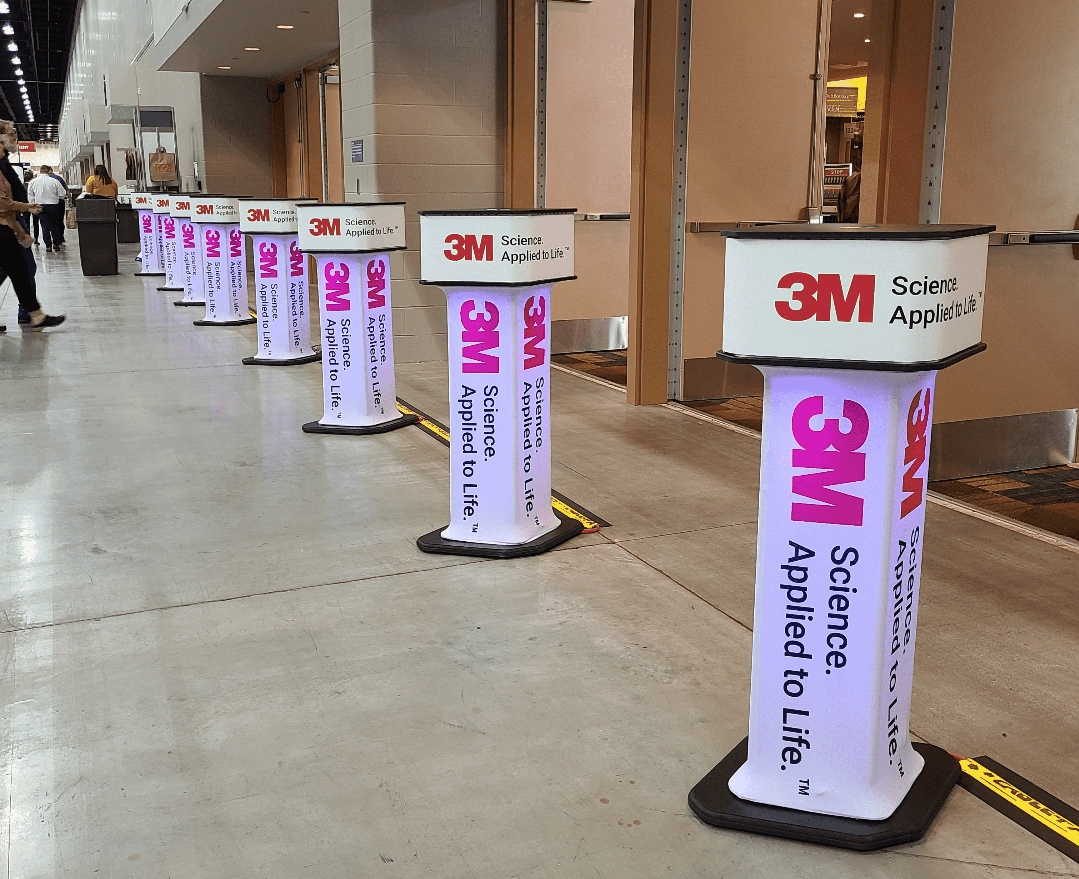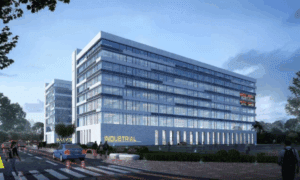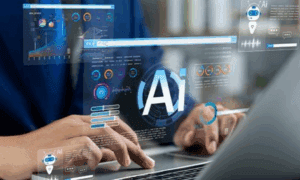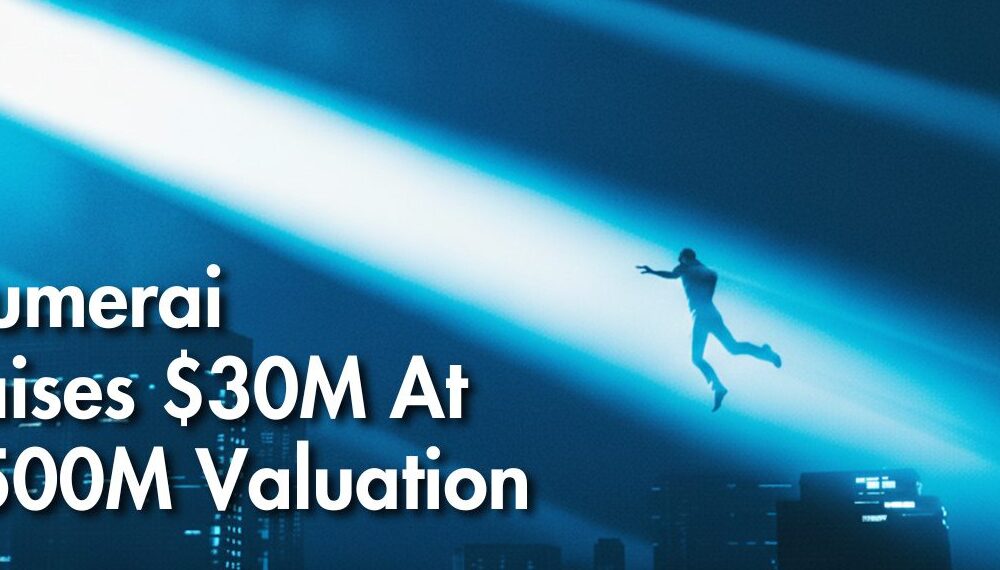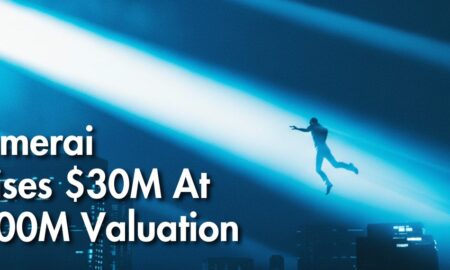Managing large-scale events comes with its fair share of challenges—keeping things moving smoothly, knowing where attendees are, and making sure everyone gets to where they need to be. That’s where Passive RFID really shines.
This technology has become a go-to for event organizers who want a better way to track attendance, monitor flow, and gather real-time insights—all without slowing people down or adding more manual tasks to their checklist.
Core Components of Passive RFID Systems
RFID Door Gate Readers
These are the silent workhorses of the system. Positioned at entrances and exits, RFID readers pick up badge signals as people walk through, logging every movement without requiring anyone to stop or scan anything.
RFID-Embedded Badges & Wristbands
Every attendee gets a badge or wristband with a tiny Passive RFID chip inside. It doesn’t need a battery. It’s lightweight and works instantly when it comes within range of a reader. Just wear it, and it does the rest.
Real-Time Software Dashboards
Behind the scenes, dashboards give event teams a live feed of what’s happening. From headcounts to session attendance, these visuals help organizers react quickly—whether it’s opening an extra door or rerouting foot traffic.
Handheld RFID Scanners for Access Control
Sometimes, more control is needed. Handheld scanners allow staff to validate access on the spot, double-check badges, or manage VIP zones with ease.
How It Works – The Attendee Journey
Badge Issuance & RFID Encoding
Before the event kicks off, every badge is programmed with a unique ID. That ID connects directly to the attendee’s profile, creating a seamless link between the person and the data.
Entry Through RFID Door Portals
As attendees arrive, they simply walk through the entry gates. No stopping, no tapping—just smooth, automatic check-in via Passive RFID detection.
Capturing Movement and Flows Across Sessions
Want to know which sessions drew the biggest crowds? RFID readers placed at session doors give you a clear picture of who went where and when, making it easier to plan future content.
Tracking Exhibit Hall Interactions
In exhibit areas, RFID helps track how people move, where they linger, and which booths get the most attention. It’s not about spying—it’s about understanding engagement better.
Technical Aspects & Accuracy
UHF vs. HF Frequency Choices
Most event tracking setups use UHF (Ultra High Frequency) because it offers longer read ranges and works better in high-traffic environments. HF (High Frequency) can be a good fit for shorter distances or tighter spaces.
Accuracy Benchmarks (99%+ at Doorways)
When set up correctly, Passive RFID readers are incredibly accurate—often capturing over 99% of badge reads at doorways. Getting this right comes down to thoughtful placement and fine-tuning.
Tag Readability and Environmental Factors
Things like metal structures, thick crowds, or even badge orientation can affect reads. But with the right setup—like using proper holders and tweaking antenna angles—you can minimize hiccups.
Delivering Real-Time Insights
Dashboard Views: Attendee Counts, Heatmaps
Live dashboards turn data into action. You can instantly see how many people are in a room or which areas are drawing the most traffic, all displayed in easy-to-read visuals like heatmaps and counters.
Live Alerts & Capacity Management
Set limits on room sizes, and the system lets you know when you’re nearing capacity. It’s an easy way to stay ahead of potential safety concerns or crowding issues.
Immediate Access Control Feedback
If someone tries to enter a restricted area, the system can flag it right away. That kind of instant feedback helps staff maintain control without being intrusive.
Post-Event Analytics & Reporting
Session Attendance Data
After the event, you get a clear record of who attended which sessions. This helps with accreditation, speaker reviews, and content planning for next time.
Exhibit Hall Traffic Insights
Want to know which booths got the most attention? Passive RFID data tells you how long attendees stayed and where they went, helping refine floor layouts and marketing strategies.
Exportable PDF & CSV Reports
Need to share insights with your team? Reports can be exported in familiar formats, making it simple to analyze performance and make decisions with confidence.
Operational Benefits
Faster Check-In & Reduced Queues
Nobody likes standing in line. With RFID, attendees move through entrances without delay, creating a smoother, more welcoming start to the day.
Improved Crowd Safety & Density Alerts
Real-time tracking lets you see where people are concentrated. If one area’s getting too crowded, you can act fast to relieve pressure and keep everyone safe.
Sponsorship & Branding Opportunities
RFID badges can be designed with branded lanyards or sponsor tags. While the focus here is on function, there’s still room for creativity in how those badges look and feel.
Privacy, Security & Data Protection
GDPR & Personal Data Handling
Privacy matters. That’s why systems built on Passive RFID need to comply with data protection regulations like GDPR. That means transparency, clear opt-ins, and secure handling of attendee information.
Secure Encryption During Transmissions
Data sent from tags to readers—and from readers to dashboards—is encrypted. That ensures sensitive info isn’t exposed during transmission.
Anonymized Summarization for Analytics
For event analysis, aggregated data is often enough. Systems can anonymize information while still delivering insights, keeping individual identities private.
Deployment Strategies
Optimal Door-Gate Placement
To get the best results, readers should be placed at choke points—like room entrances or hallways. Avoid spots with a lot of metal or electronic interference.
Scanner-Based vs Portal-Based Scanning Zones
Portals handle the heavy lifting automatically. But handheld scanners are perfect for smaller zones or backup. Using both provides a strong safety net.
Integration with Mobile Apps & Hybrid Events
Today’s events are often hybrid. RFID data can sync with mobile platforms, giving virtual and on-site teams a shared dashboard of what’s happening in real time.
Beyond Tracking – Added Use Cases
Cashless Payments
With the right system integration, that same RFID badge could be used for cashless payments—streamlining transactions at food stands or merchandise booths.
Access Control to VIP Zones
Not every zone is open to everyone. RFID lets you assign access levels to each badge, keeping VIP areas exclusive and secure.
Contact Tracing & Room Occupancy Monitoring
Need to support health compliance? RFID tracking helps by logging where people have been, making contact tracing easier if needed.
Challenges & Best Practices
Interference & Overlapping Reads
To avoid confusion between zones, space readers appropriately and use directional antennas. It’s all about controlling the signal field.
Ensuring Badge Readability Throughout Event
Make sure attendees know how to wear their badges for maximum readability. Placing them at chest height and avoiding folds or pockets makes a big difference.
Training Staff & Managing Live Alerts
A well-trained team knows how to react to alerts and troubleshoot issues on the fly. That human layer complements the tech and keeps things running smoothly.
Comparing Passive RFID to Other Tech
Active RFID & RTLS vs Passive RFID
Active RFID tags send out signals constantly and are better suited for tracking assets over time. Passive RFID, on the other hand, is perfect for short-term, high-volume attendee tracking.
Bluetooth Beacons vs RFID
Bluetooth can track proximity but isn’t as fast or accurate in dense environments. It also requires power, while passive tags don’t.
QR Codes & NFC vs Passive RFID
QR codes and NFC rely on manual scanning. That works for some situations, but it doesn’t scale the way Passive RFID does in large, fast-moving events.
Future Trends
Integration with AI & Predictive Analytics
As RFID data grows richer, AI tools can help make sense of it—forecasting crowd flow, predicting session demand, and guiding better layouts before the doors even open.
Enhanced Dashboard Visualizations
Expect dashboards to become more intuitive, mobile-friendly, and visual, allowing teams to make quicker, smarter decisions.
Sustainability: Eco-Friendly RFID Tags
Sustainability is on the radar. More vendors are offering recyclable or biodegradable RFID tags, helping reduce waste without sacrificing performance.
Main Key Takeaways
- Passive RFID offers seamless, automated attendee tracking that enhances event operations
- Door portals, badges, and dashboards work together to provide real-time data with high accuracy
- The system improves flow, safety, and access control—all without slowing people down
- Privacy and compliance are built-in when configured properly
- As events evolve, RFID continues to adapt with new applications and sustainable options
FAQs
What’s the ideal read range for door portals?
Most setups using UHF readers achieve reliable reads between 3 and 15 feet, depending on the layout and environment.
Can attendees use the same badge for payments?
Yes, with proper setup, RFID badges can be used for access, tracking, and even purchases—all from a single tag.
How is privacy ensured with badge tracking?
By encrypting data, using anonymized reports, and complying with regulations like GDPR, event organizers can maintain attendee trust.
Is this tech practical for smaller events?
Definitely. Passive RFID is scalable, making it just as useful for intimate conferences as it is for massive trade shows.

